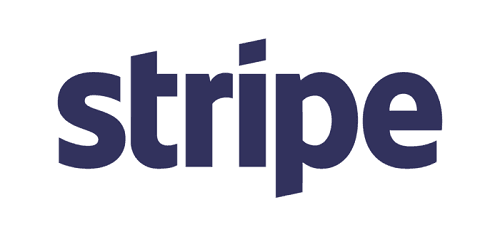Business.com aims to help business owners make informed decisions to support and grow their companies. We research and recommend products and services suitable for various business types, investing thousands of hours each year in this process.
As a business, we need to generate revenue to sustain our content. We have financial relationships with some companies we cover, earning commissions when readers purchase from our partners or share information about their needs. These relationships do not dictate our advice and recommendations. Our editorial team independently evaluates and recommends products and services based on their research and expertise. Learn more about our process and partners here.
Stripe vs Stax Comparison
Stripe and Stax are two of the best credit card processors for small businesses. Here is how they compare and contrast.

Table of Contents
Stripe and Stax are two of our top choices for the best credit card processors. To help you decide between these two credit card processing vendors, we performed a deep dive into each service, focusing on pricing, payment methods, hardware options, integrations and customer service. Here is how Stripe and Stax compare in each of these categories.

Stripe vs. Stax highlights
Stripe and Stax are payment processors that allow businesses to accept credit and debit cards, along with digital wallets such as Apple Pay. They both ensure that you follow credit card processing rules and laws like Payment Card Industry (PCI) compliance and use modern software. Nevertheless, they each offer unique features and capabilities, making them suitable for different businesses.
Criteria | Stripe | Stax |
|---|---|---|
Best for | E-commerce businesses and web developers | High-volume businesses |
Pricing |
2.9% plus 30 cents (online); 2.7% plus 5 cents (in-person) |
$99 to $199 per month; 8 cents to 15 cents per transaction |
Payment methods | Online checkout, virtual terminal and Apple/Google Pay | Online checkout, virtual terminal and Apple/Google Pay |
Hardware | Stripe Reader S700, Stripe Reader M2, BBPOS WisePOS E terminal, BBPOS WisePad 3, Verifone V660p and UX700 | Dejavoo QD2 and QD4, Clover products, SwipeSimple B350 Reader |
Third-party integrations | 300-plus, including Zapier, HubSpot and NetSuite | Open application programming interface (API), plus built-in integrations, such as QuickBooks, Salesforce and HubSpot |
Customer service | 24/7 support by phone, chat and email | Phone, chat, email and online knowledgebase |
Who is Stripe for?
Stripe is best for e-commerce businesses, especially those that can access in-house web developers. Learn about the processor in detail in our full Stripe review.
Who is Stax for?
Stax works well for high-volume businesses because of the vendor’s flat-rate pricing. Check out our full review of Stax for more information.
Stripe vs. Stax service comparisons
Plans and pricing
Stripe plans and pricing
Stripe features an interchange-plus pricing model, charging businesses a percentage of the transaction on top of the credit card company’s interchange rate, plus a small flat fee. These rates depend on the payment method.
Payment method | Cost |
|---|---|
Online cards and digital wallets | 2.9% plus 30 cents for each transaction |
In-person card and wallet payments | 2.7% plus 5 cents for each transaction |
In-person Tap to Pay | 2.7% plus 15 cents for each transaction |
Automated Clearing House payments | 0.8% with a $5 cap |
Buy Now, Pay Later | Starting at 5.99% plus 30 cents for each transaction |
Stripe also offers an invoicing tool for recurring payments. Stripe assesses a 0.4% fee (or a maximum of $2) per invoice amount.
Stax plans and pricing
Stax offers flat-rate pricing, which is completely different from Stripe’s pricing model. Instead of taking a percentage of the transaction, Stax charges a monthly subscription fee, plus a small per-transaction fee.
Stax currently offers three service plans based on transaction volume.
Service plan | Monthly cost | Features |
|---|---|---|
Processing volume of up to $150,000 per year | $99 |
|
Processing volume between $150,000-$250,000 per year | $139 | All features in the above plan, plus:
|
Processing volume of $250,000-plus per year | $199+ | All features in the above plan, plus:
|
Stax also charges a per-transaction fee of 8 cents for EMV credit card terminals and 15 cents for all other payment methods, including mobile card readers and online transactions.
Expect these fees:
- Chargeback: $25 fee when a customer disputes a charge and seeks a refund
- Noncompliance: $54.99 fee for failing to meet PCI compliance requirements
- Below-quota processing: $25 fee if you don’t process a specified monthly minimum
Payment methods
Stripe processing
Stripe provides a variety of ways for business owners to accept payments:
- Online checkout: You can easily embed a premade Stripe checkout form onto your website. If you have coding skills, you can customize the form to match the branding of your business.
- Stripe billing: You can use the API to build a custom solution for subscription business models or recurring payments.
- Point-of-sale (POS) hardware: Stripe offers its own proprietary hardware for in-person sales. Its software is also compatible with several third-party POS devices.

With Stripe, you can hire a developer or use your coding skills to build custom payment solutions. Source: Stripe
- Virtual terminal: The Stripe virtual terminal allows you to key in transactions manually so you can accept payments over the phone.
- Mobile payments: The Stripe mobile app allows you to accept payments on the go, turning your smartphone into a POS system.
- Mobile wallet: Stripe supports a wide variety of digital wallets, including Google Wallet, Apple Pay, Samsung Wallet, Visa Checkout, Masterpass by Mastercard, Amex Express Checkout, Microsoft Pay, Alipay and WeChat Pay.
Stax processing
Stax offers a slate of payment methods that are standard among credit card processors:
- Virtual terminal: You can access the Stax virtual terminal on a web browser to key-in information when accepting credit card payments over the phone or to set up recurring billing.
- Shopping cart: Use Stax to set up an online store and build custom shopping carts to integrate into your website.
- Mobile app: You can accept payments with the Stax Pay mobile app and a card reader. You can also manually enter card information into the app.
- POS hardware: Stax is compatible with several third-party POS equipment providers, including Clover.

Stax allows you to send invoices through email or text message for easy payment. Source: Stax
Hardware
Stripe hardware
Stripe offers its own hardware, but its processing services can also be used with a few third-party POS devices. Options include:
- Stripe Reader S700: The handheld terminal supports EMV chip cards, contactless payments and magstripe cards.
- Stripe Reader M2: This mobile reader is designed to be paired with a smartphone. It accepts EMV chip cards, contactless payments and magstripe cards.
- BBPOS WisePOS E: This third-party countertop reader connects to Stripe’s terminal software.
- BBPOS WisePad 3: This third-party handheld reader is designed to be paired with a smartphone.
- Verifone V660p: This third-party handheld device accepts all card types and includes a built-in printer.
- Verifone UX700: This third-party device is meant for self-service operations and accepts all card types.

The Stripe Reader was introduced in 2023 as an in-house hardware option. Source: Stripe
Stax hardware
We like that Stax’s credit card processing software works with a variety of systems. You can use it on different devices available at affordable prices, such as:
- Dejavoo QD2: This handheld terminal accepts EMV chip cards, contactless payments and magstripe cards.
- Dejavoo QD4: This countertop terminal accepts all forms of card payments and has Wi-Fi and Ethernet connections.
- Swipe Simple B350 Reader: This device can be paired with an iOS or Android device to accept EMV and magnetic stripe cards.
- Clover: Stax software is compatible with the full suite of Clover credit card processing hardware, including the Flex, Mini and Station.
Stax is the winner for hardware because it offers a greater variety of options than Stripe. We like that Stax's software is available on Clover’s hardware, as Clover provides one of the best POS systems for small businesses. Most companies can find something that suits their unique needs and budget with Stax.
We appreciate that Stripe offers proprietary hardware, but its options are limited to mobile readers and handheld terminals, which might be insufficient for businesses that require more specialized hardware solutions.
Third-party integrations
Stripe integrations
Stripe boasts more than 300 built-in integrations with third-party business apps and works with hundreds of additional partners, including the following services:
- QuickBooks Sync by AcodeiXero
- ServiceNow
- HubSpot
- Shopify
- Mailchimp
- Wix
- Zapier
Stax integrations
Stax offers around a dozen third-party integrations, far fewer than the hundreds offered by Stripe. On the plus side, Stax does have an open API, so developers can integrate the credit card processing software easily with third-party apps. Built-in integrations include:
- Slack
- HubSpot
- Intuit QuickBooks
- Xero
- Microsoft Teams
- Zoho
- Google Docs
- Mailchimp
- monday.com
Customer service
Stripe support
Stripe provides its customers with:
- 24/7 phone, chat and email support.
- Technical support on Discord.
- Searchable documentation.
- Online tutorials and articles.
- FAQs on the Stripe website.
Stax support
Stax offers customer service via:
- Phone, email and live chat.
- Help ticket forms on the Stax website.
- Searchable knowledge base.
- Articles on the Stax website.
Stripe vs. Stax summary
Stripe is best for brick-and-mortar and tech-savvy business owners.
Consider choosing Stripe if:
- You’re looking for a feature-packed solution.
- You have a developer or technical team for customization.
- You’re a brick-and-mortar business that could benefit from advanced POS systems.
- you can afford to pay a bit more for Stripe’s excellent features.
Stax is best for growing small businesses on a budget.
Consider choosing Stax if:
- You’re a high-volume small business in the growth stage.
- You want to save money with a subscription-style model and no interchange markup.
- You want an easy-to-use interface that doesn’t require a developer.
FAQs
Anna Baluch contributed to this article.


